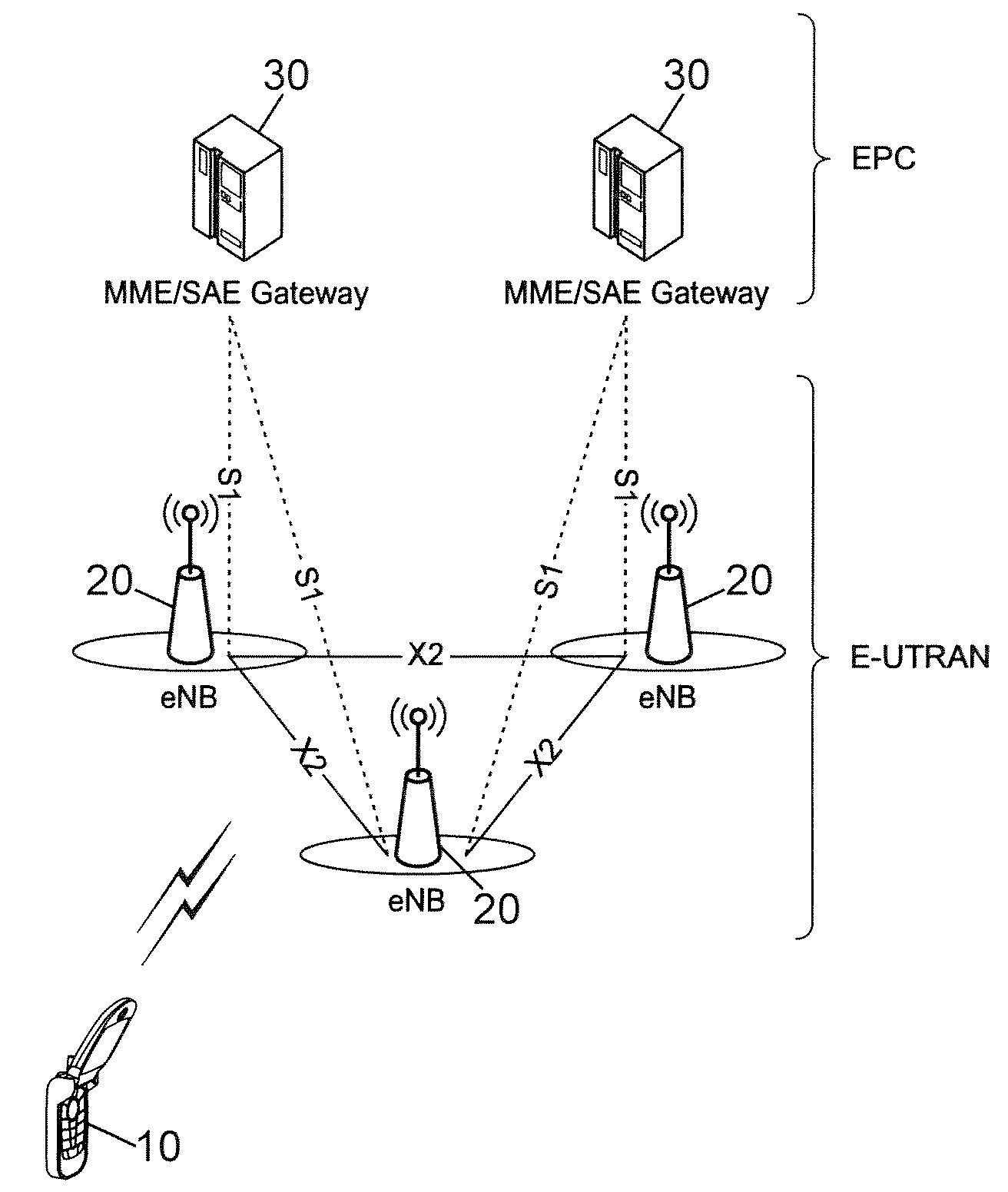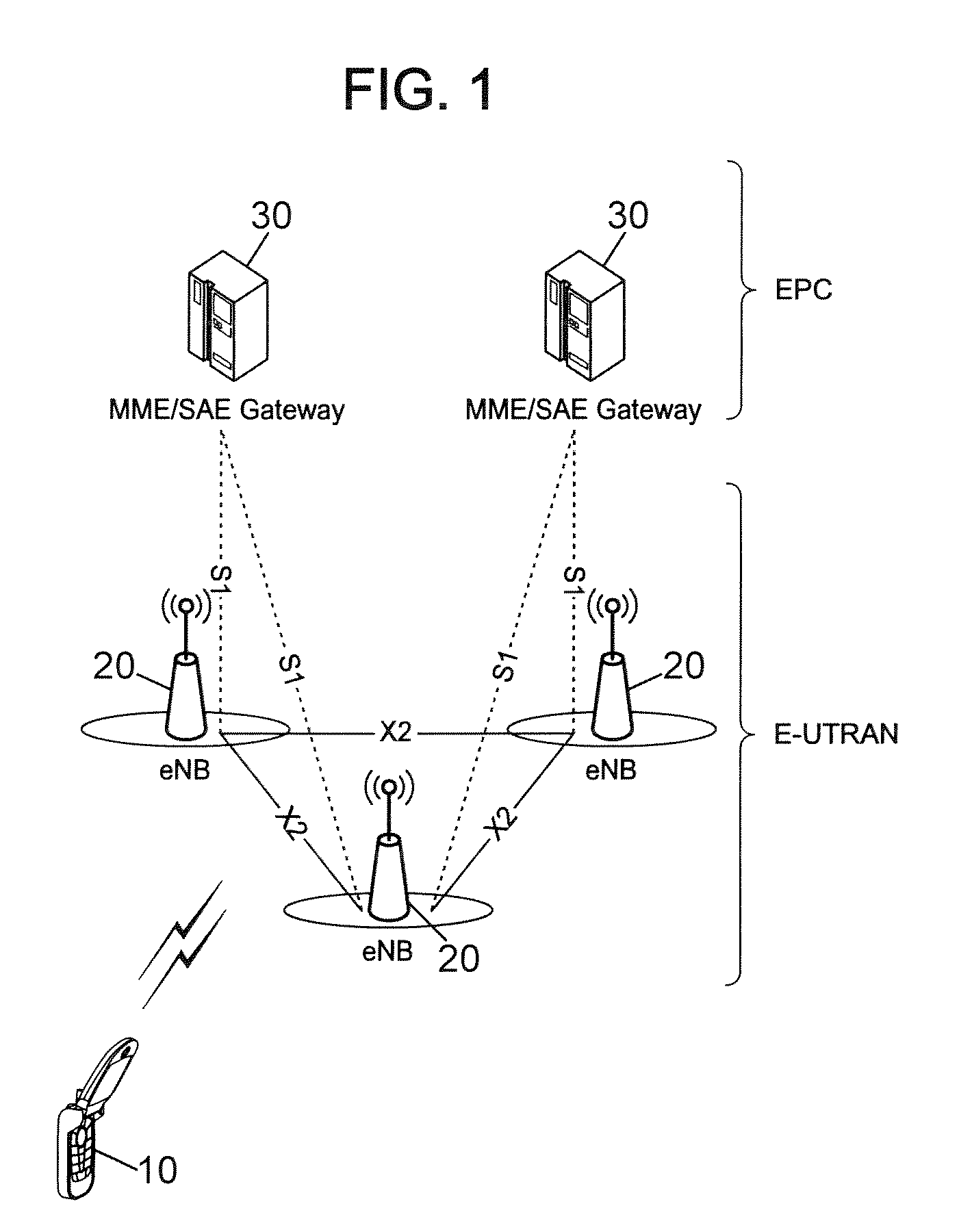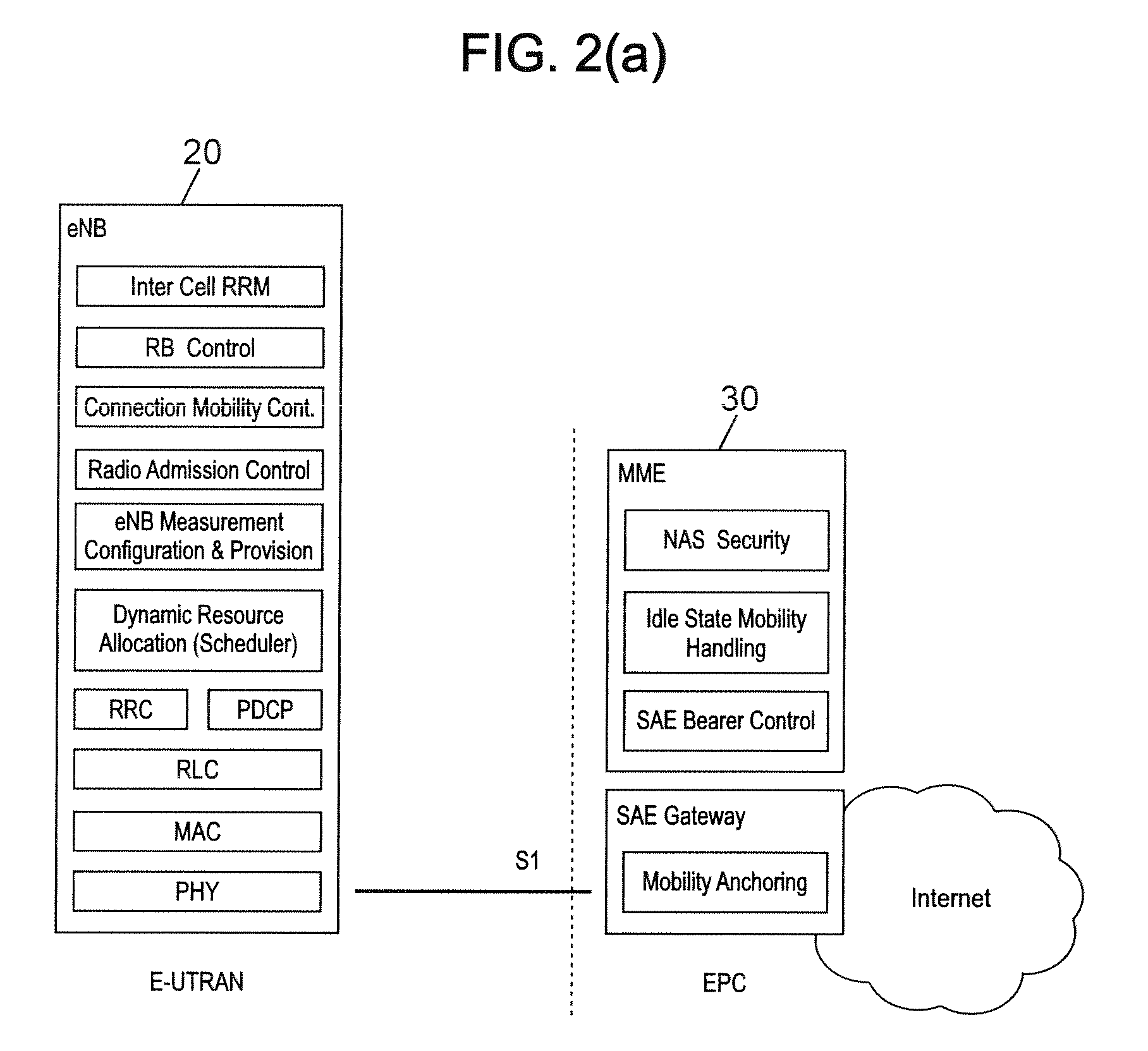Method of transmitting uplink data and buffer status reports in a wireless communications system, wireless device for implementing such method
a wireless communication system and wireless communication technology, applied in the field of packet transmission in a cellular communications network, can solve the problems of not being able to know the exact affecting the size of the data, and it is not possible for the transmitter to indicate the exact size, etc., to achieve accurate estimation and good reactivity
- Summary
- Abstract
- Description
- Claims
- Application Information
AI Technical Summary
Benefits of technology
Problems solved by technology
Method used
Image
Examples
first embodiment
[0062]In a first embodiment, the BSR indicates the size (as a number of octets, typically) of non-compressed data for transmission, as stored in the PDCP buffer 56. This is a simple way of reporting buffer status. Depending on what other information would be transmitted, the BSR may further include the size of the PDCP PDUs that contain compressed PDCP SDUs that have already been passed to the RLC layer, namely PDUs 60 stored in the RLC buffer 81 with a short header 61 designating a PDU for user data traffic. Depending on the application, the size of the PDCP control PDUs 70 stored in the RLC buffer 81 may also be included.
second embodiment
[0063]In a second embodiment, the BSR provides an estimation of the compressed size of data to be transmitted. This information is for example calculated based on the contents of the PDCP buffer 56 and a compression factor that has been achieved earlier for the data of the radio bearer of interest. In certain cases, the compression factor can also be a figure provided by the compression algorithm.
[0064]Alternatively, the estimation of the compression factor is provided by the eNodeB. The eNodeB can estimate this factor based on the compression ratio observed on previous PDUs by the RoHC decompression algorithm run in the eNodeB PDCP entity.
[0065]When the compression factor is estimated locally in the UE 10, an interesting possibility is to report the amount of uncompressed data contained in the PDCP buffer 56 at a relatively high frequency, for example, every 100 milliseconds or so, and to report the observed compression factor at a lower frequency, for example, every 1 second or 10...
PUM
 Login to View More
Login to View More Abstract
Description
Claims
Application Information
 Login to View More
Login to View More - R&D
- Intellectual Property
- Life Sciences
- Materials
- Tech Scout
- Unparalleled Data Quality
- Higher Quality Content
- 60% Fewer Hallucinations
Browse by: Latest US Patents, China's latest patents, Technical Efficacy Thesaurus, Application Domain, Technology Topic, Popular Technical Reports.
© 2025 PatSnap. All rights reserved.Legal|Privacy policy|Modern Slavery Act Transparency Statement|Sitemap|About US| Contact US: help@patsnap.com



